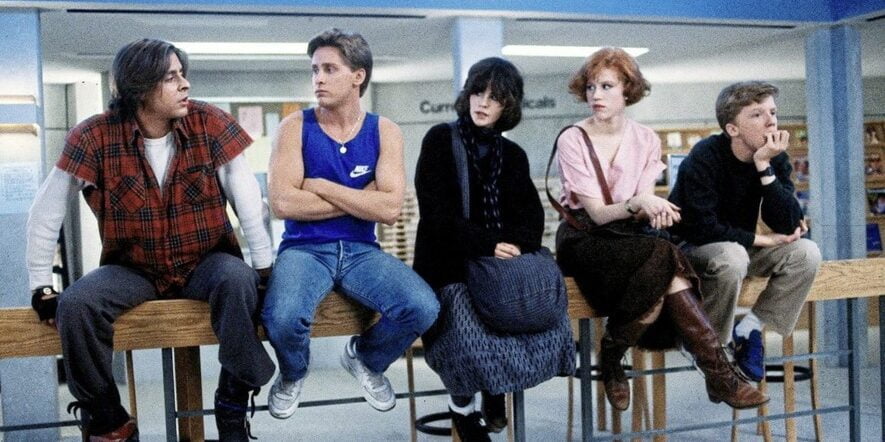The Breakfast Club is to project management what The Godfather is to running a corporation. Luckily, there isn’t any bloodshed in The Breakfast Club, which makes this film more manageable for those who are interested in project management as well.
While the movie is a coming-of-age film about five students who were locked in detention for different reasons, it is also an analogy of how team dynamics and project management work. In this article, we will be looking at how this movie relates to project management and how it can be used as an example for projects that involve these types of personalities.
What is The Breakfast Club about?
The Breakfast Club is a 1984 American coming-of-age comedy-drama film written and directed by John Hughes. The film tells the story of five teenagers who meet on a Saturday detention and bond over their shared love of hip-hop music, movies, and pop culture.
In project management, it’s not uncommon to find yourself with a group of people who are all on the same project. They might be working toward the same goal or different goals that require collaboration and communication.
How The Breakfast Club relates to project management?
Project management is all about channels. This goes from the early stages of the project all the way through long-term work management once milestones have been met. This, in turn, helps create more boundaries with other projects related to time and resources.
The Breakfast Club falls into this category—a movie depicting five high school students enrolled in a very real juvenile detention centre, who band together as accomplices against their adult offender, Vice Principal Vernon Brown.
The group pulls off this win by combining talent and dedication, which are both signs of good project management. These five individualistic teenagers not only care but are culturally aligned to find out what they need by breaking barriers that were preventing them from moving on to the next level of their lives.
How does the movie relate to Agile teams?
The Breakfast Club draws parallels with Agile team management in four ways:
1. Working in a team yields better results than going solo
Andrew Clarke, the jock, looks down upon John Bender, who is a delinquent. But, let’s not be too harsh on Clarke just yet. Everyone looks down on Bender at first. Bender looks down on all of them. Each of the five students believes that they are it and a bit, while thinking that the others are useless. Over the course of the movie, they gradually admit their flaws and accept the others as equals, flittering in the same cesspool of constant disappointments.
The students find that if they work as a team, they are more successful than when they each try to do their thing. In fact, the team performs better than some of the more popular cliques and popularity-based organisations. The movie illustrates the ups and downs of how teamwork can produce better results than people working individually.
2. Team building takes time… and patience… and efforts
While the team building in the movie happens in a single day, don’t expect fully functional teams to form that fast in real life. In real life, just getting the team members and stakeholders in the same room can take days. But the movie charts such a stunning parallel to real-world team dynamics that you can’t help but gawk at how the filmmakers did it.
The movie introduces the five leads as stereotypical cardboard cut-outs. The other characters only get to know each other when they break down their barriers and emerge from stereotypical characters. This is a major takeaway about team building. For team members to bond with one another, they have to get to know one another; they have to know what makes them tick and what doesn’t. It’s going to take time. Remember what they said about Rome? That it wasn’t built in a day? Well, the same holds true for an Agile team. A fully functional Agile team can take weeks or even months to form.
3. A team is the sum of the values that its team members bring to the table
John Bender—the criminal, Brian Johnson—the brain, Allison Reynolds—the stress head, Claire Standish—the princess, and Andrew Clarke—the athlete, have nothing in common. They belong to different social cliques and initially saw themselves as being anywhere else but as a part of the ragtag group that formed in the detention room. But, thanks to their combined efforts in avoiding Mr. Vernon, they eventually come around to accepting the unique abilities that the others bring to the table.
Each of us has something valuable to contribute to the group, and we all have areas where we could stand to improve. By collaborating closely, we can all learn from one another and grow, both as individuals and as a unit.
4. You build teams with specialists
All five teens are good at something. Each one of them has a defining set of characteristics that sets them apart from the others. It’s the same with Agile teams. Agile teams are made up of individuals and diverse people. Each member has a different specialisation and will provide unique perspectives in team dynamics and project management. Every team member brings their own skill set, resulting in a complete set of skills required to build customer products, and value quickly.
Final word
If you haven’t had the chance to watch this cult classic, consider this article your cue. The Breakfast Club may not have costumed superhero hijinks or fire-breathing dragons, but it offers some quintessential insights into human tendencies and how teams work in general.
Want to find out more about how AMO can help with your project management capability? Have a look here (https://agilemanagementoffice.com/consult/) how our team can help yours reach their full project management potential. If you want to know more, contact us on contact@agilemanagementoffice.com
